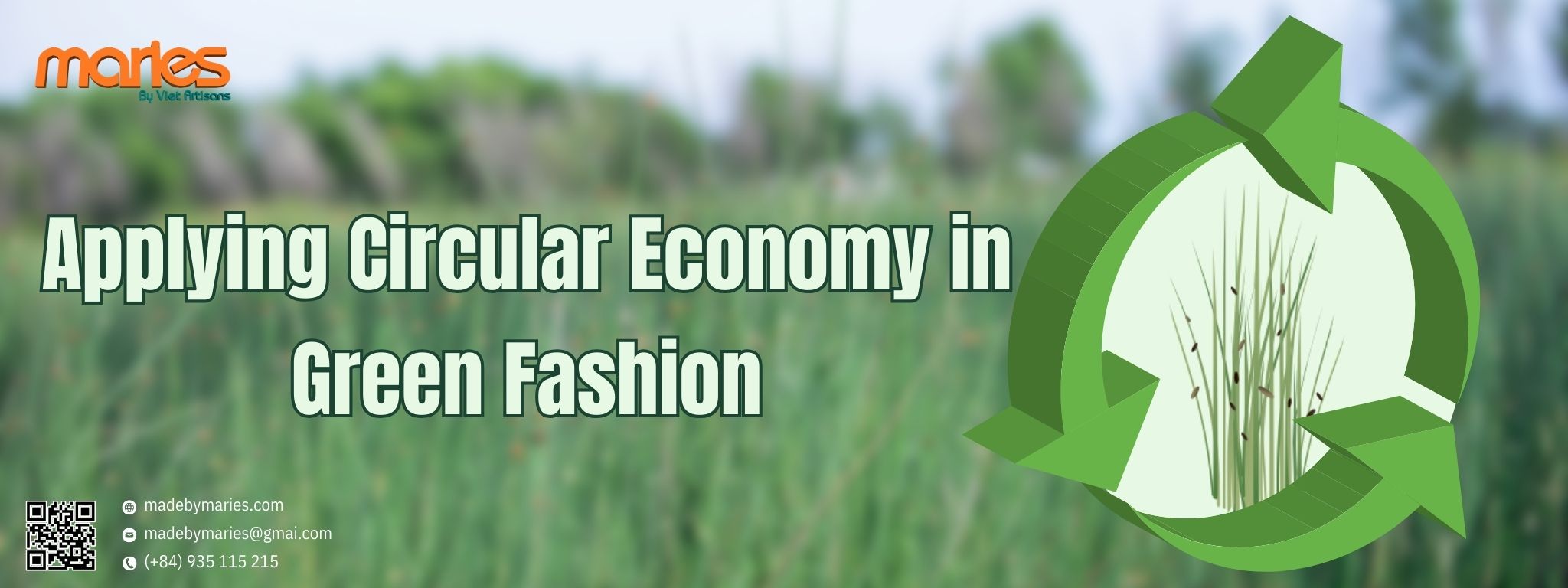
1, Circular Economy: A Solution for a “Green” Future
Replacing the previous linear economy, the circular economy is becoming an essential economic development model worldwide. It is an effective solution to global challenges such as climate change, biodiversity loss, waste pollution, and promotes sustainable development measures.
“The circular economy is an economic model where design, production, and service activities aim to extend the lifespan of materials and eliminate negative environmental impacts. Unlike the traditional economic model that focuses on resource extraction, production, and disposal post-consumption, leading to massive waste, the circular economy emphasizes resource management and regeneration in a closed loop to prevent waste creation. Transitioning to a circular economy presents a significant opportunity for sustainable development, achieving economic, social, and environmental goals, and addressing climate change.”
>> Read more: Maries Signs Commitment to Support the Women’s Empowerment Principles (WEPs)
2, Maries – Applying Circular Economy in Green Fashion
As a pioneering company in traditional handicrafts, Maries Co., Ltd. produces and trades products such as bags, conical hats, caps, and wallets made from natural sedge fibers. From its inception, Maries has committed to achieving Sustainable Development Goals (SDGs) and effectively addressing climate change.
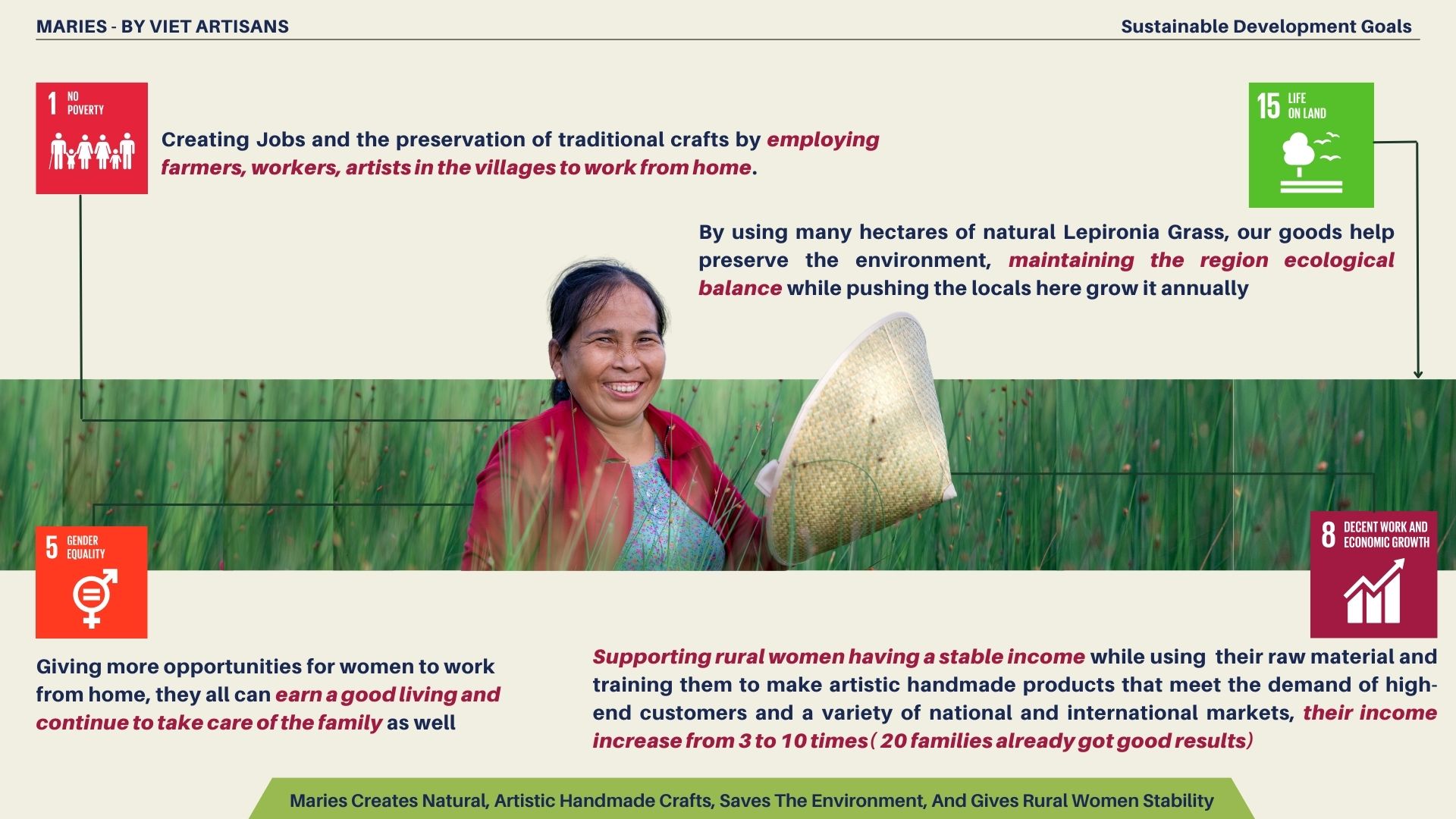
Applying the Green Economy Model in Production Processes
Since 2022, Maries has been increasing the lifespan of handicraft products by adhering to the fundamental principles of the circular economy. Maries avoids the use of harmful chemicals, utilizes natural materials, and minimizes waste by extending the product lifecycle
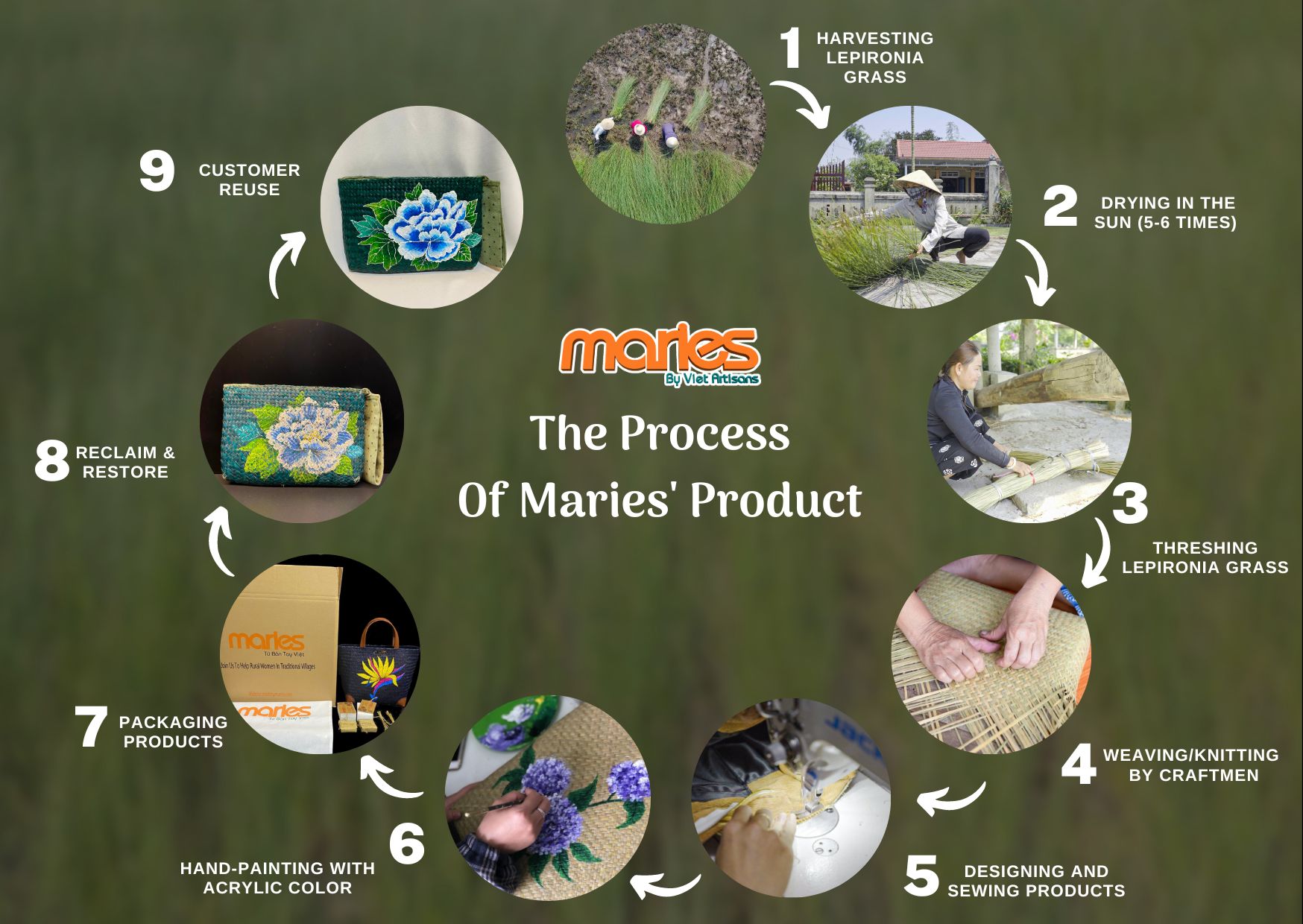
Implementing Circular Economy in Maries’ Business Model
Leveraging green materials thanks to product diversity. Through creativity and variety in design, Maries utilizes all types of sedge fibers of different lengths, from over 1 meter to shorter strands. This not only optimizes raw materials but also meets the practical needs of modern consumers.
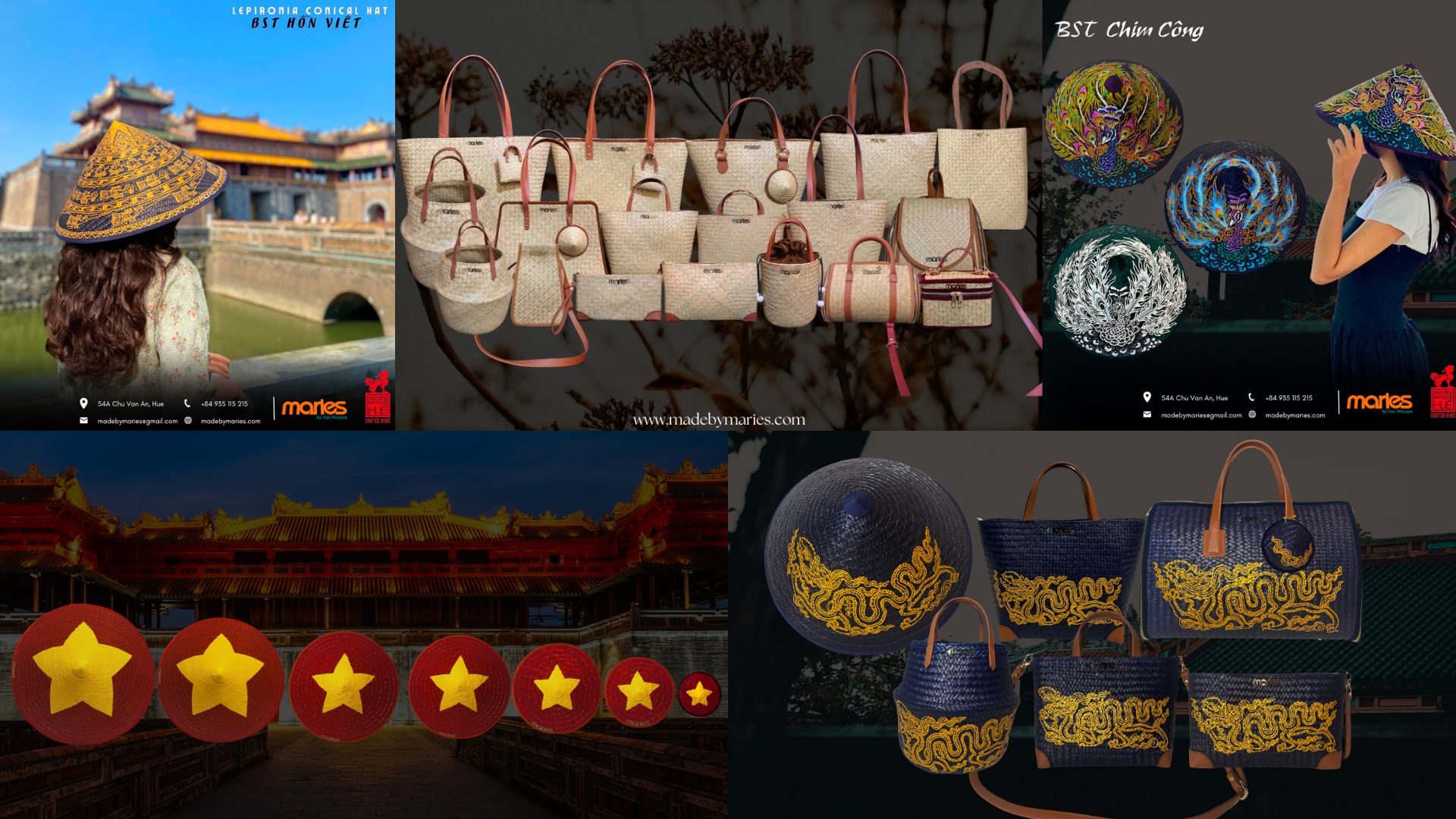
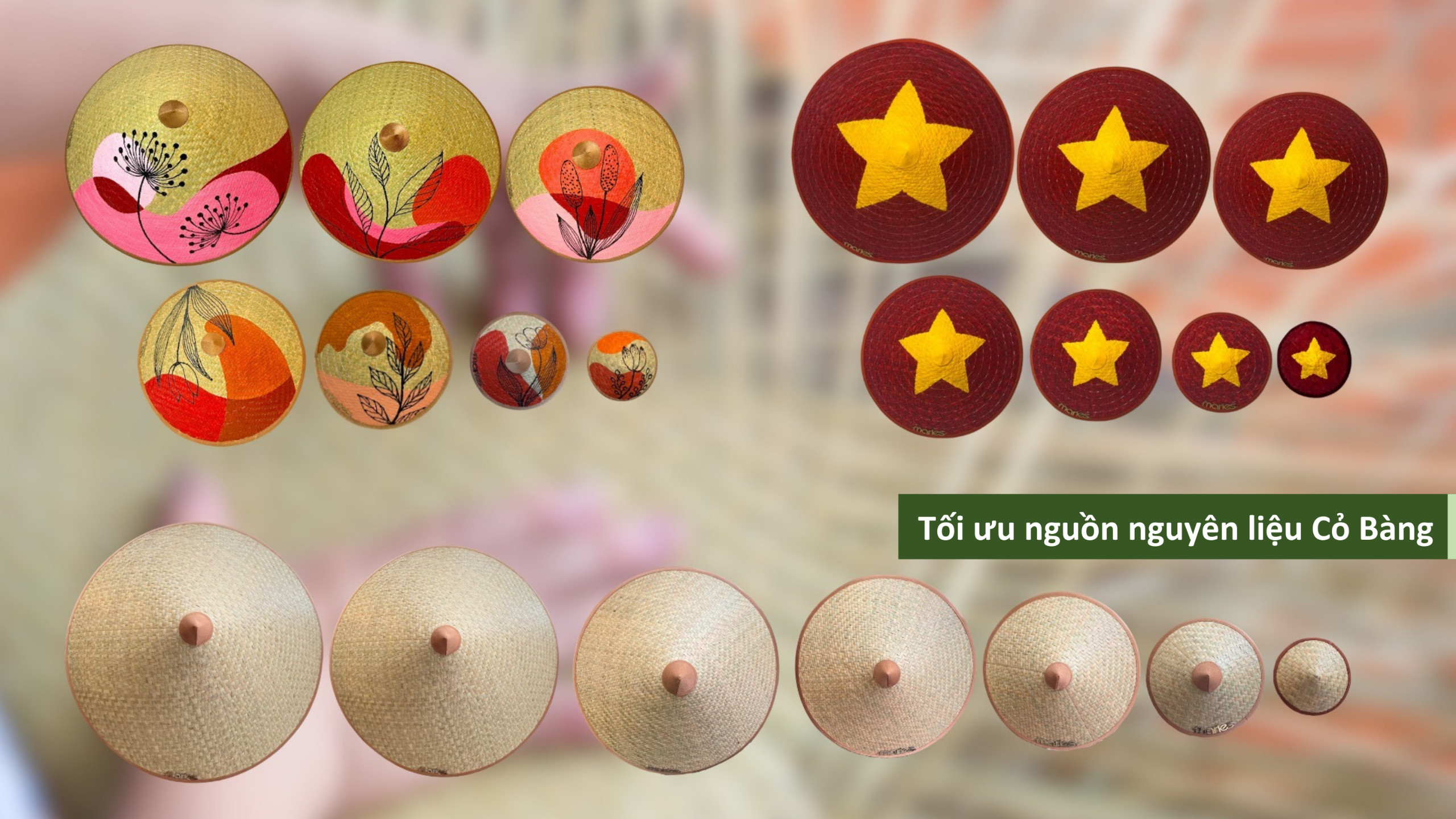
Extending the Lifespan of Traditional Handicrafts
By prolonging the life of handicraft products, Maries efficiently uses resources, reduces waste, protects the environment, and creates sustainable economic value. Maries’ products cater to the increasing demand for traditional crafts, aiming for products that are traditional but not “old” and handcrafted yet “durable.”
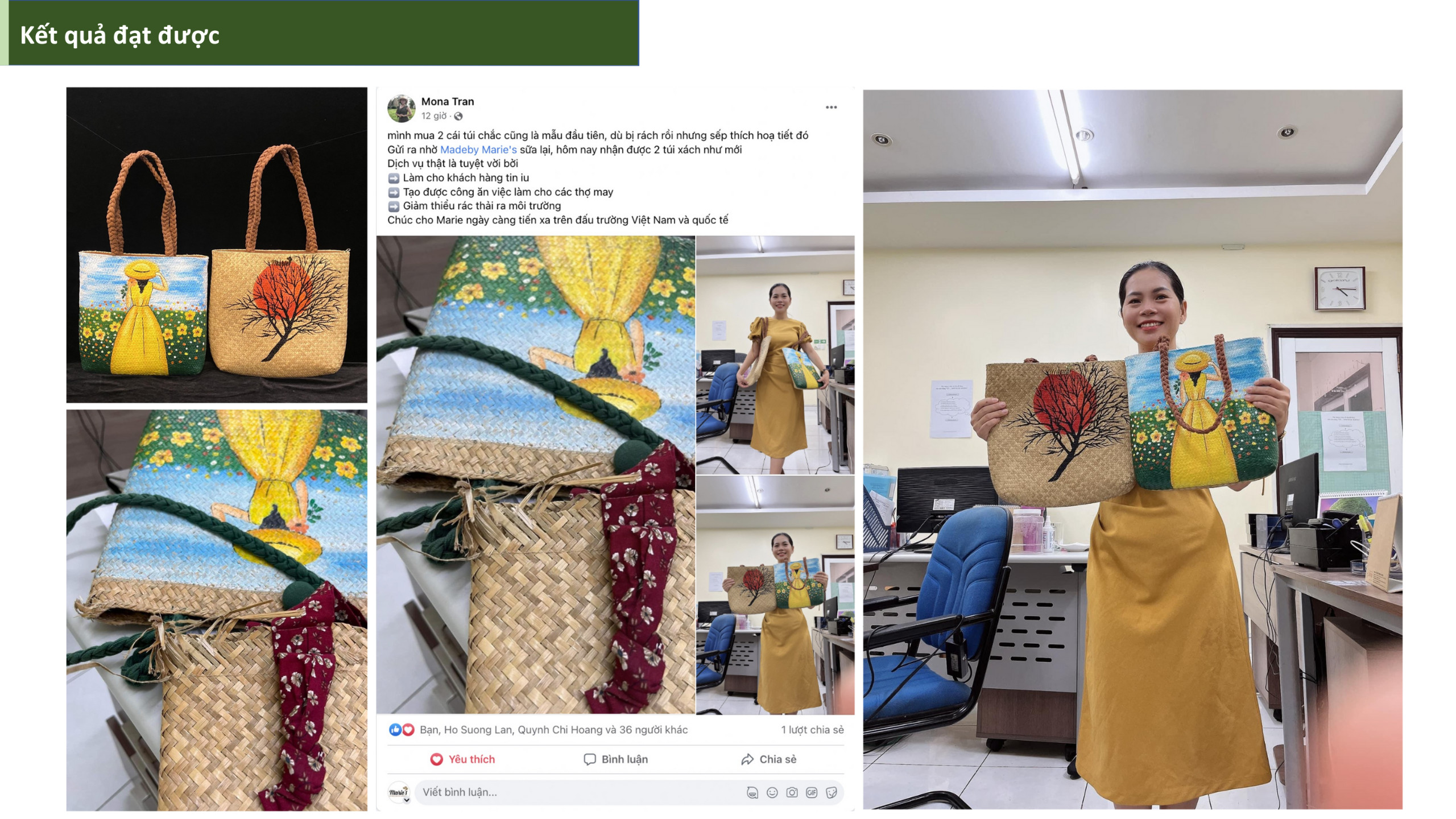
Implementing the circular economy model is not only a sustainable trend but also a motivation for Maries to continuously innovate, optimize costs and resources, and add value for customers.
Towards a Sustainable Future and International Integration
By building and developing the brand, Maries aims to promote its products widely within the country and bring products made by Vietnamese hands to the international market. This effort contributes to spreading the cultural beauty of Hue’s and Vietnam’s traditional products, especially honoring the talents and skills of rural women in traditional craft villages, helping them realize their dreams of happy homes and prosperous villages.
Implementing the circular economy model in businesses is a sustainable trend and a motivation for us to continuously innovate solutions to optimize costs and available resources while adding value for customers!
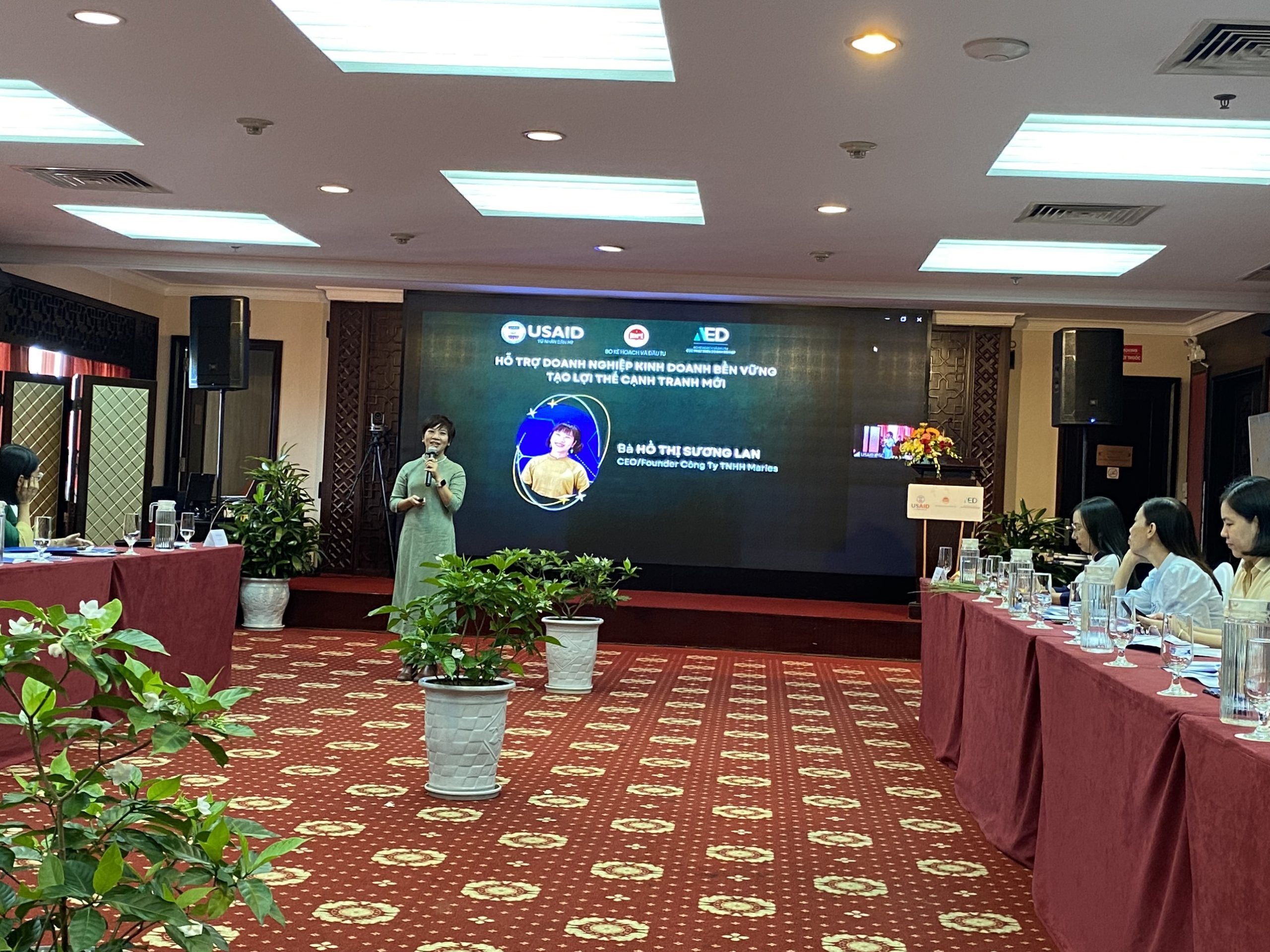
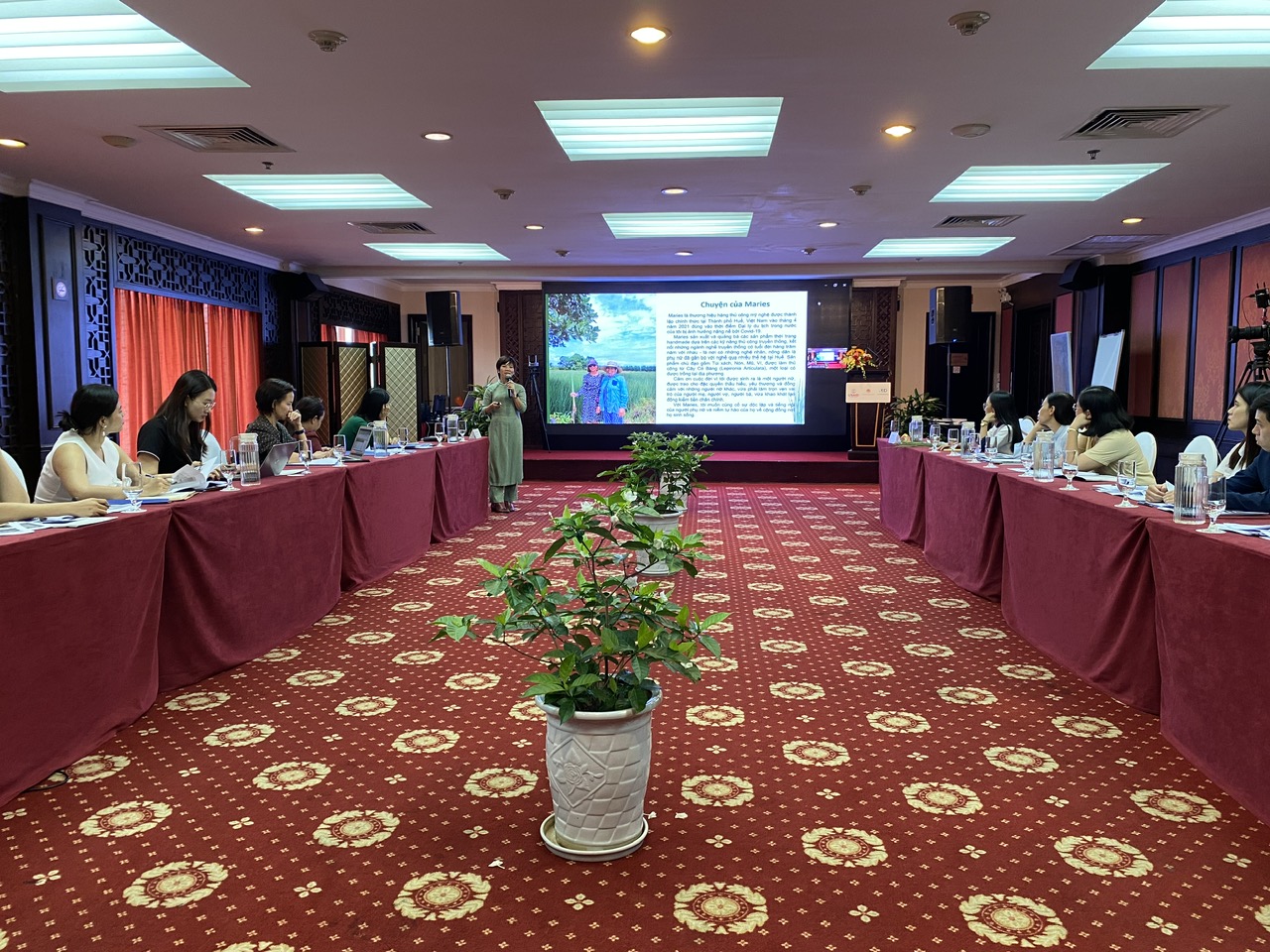
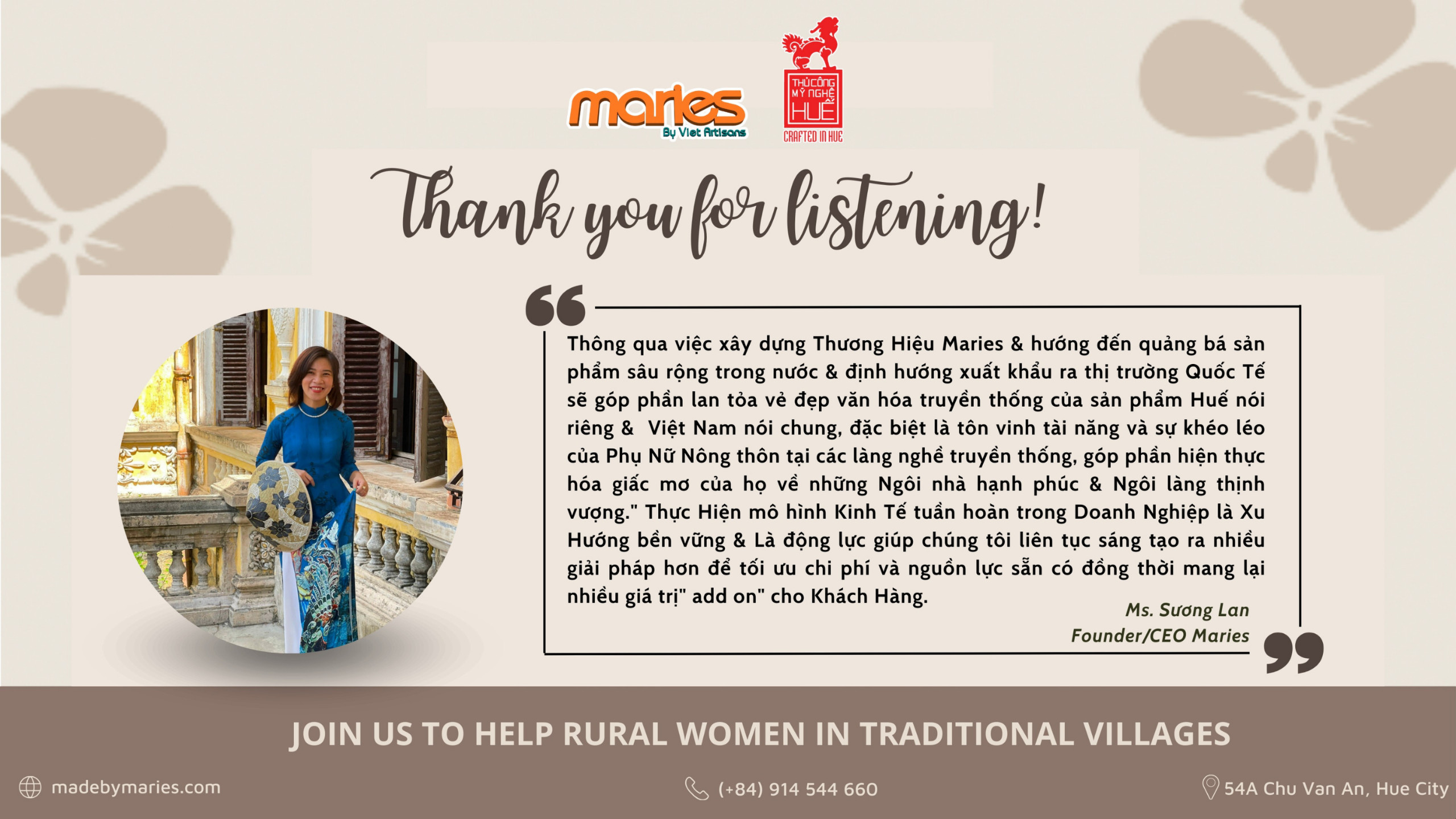
Maries – By Viet Artisans – 03/08/2024
